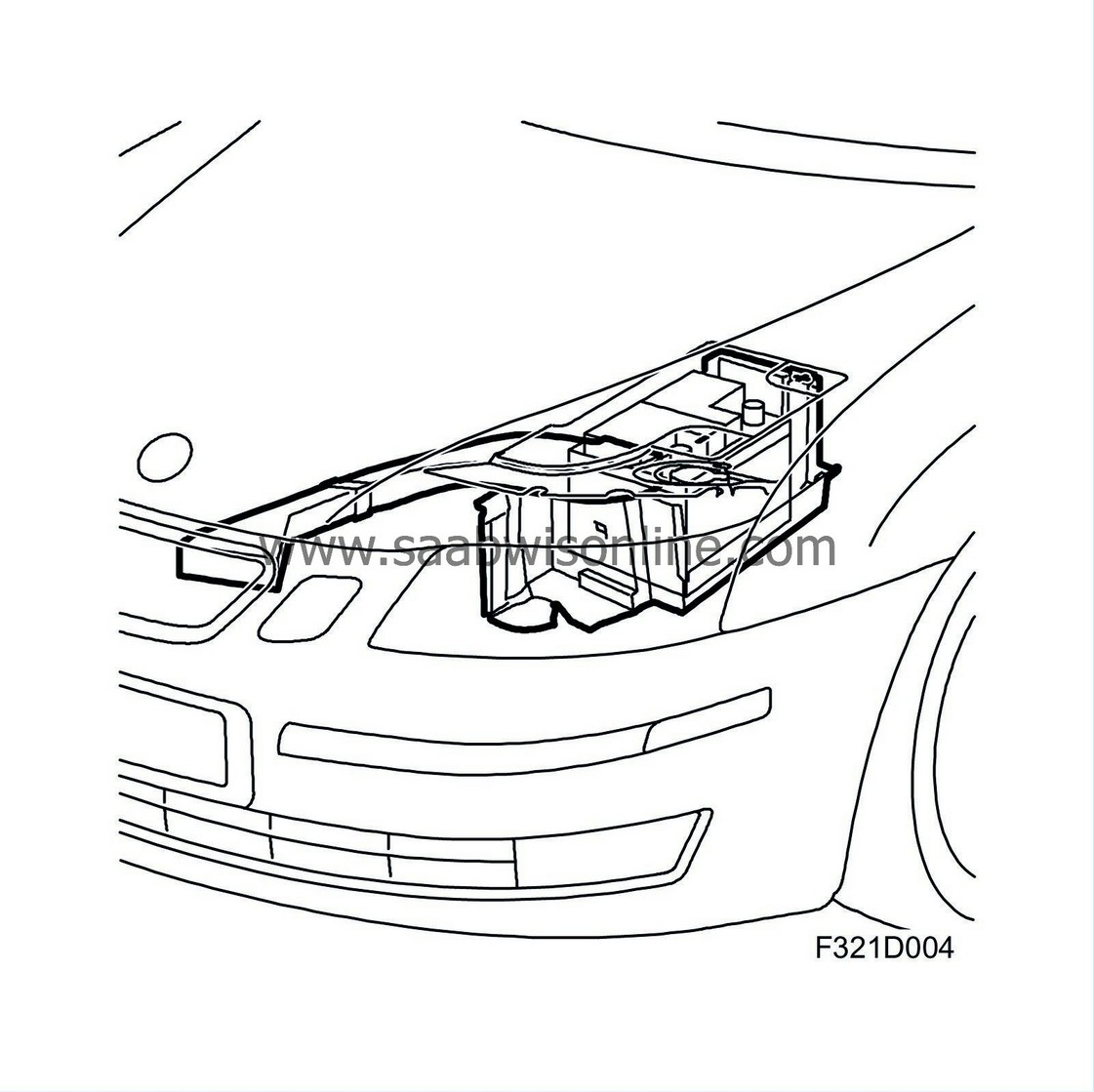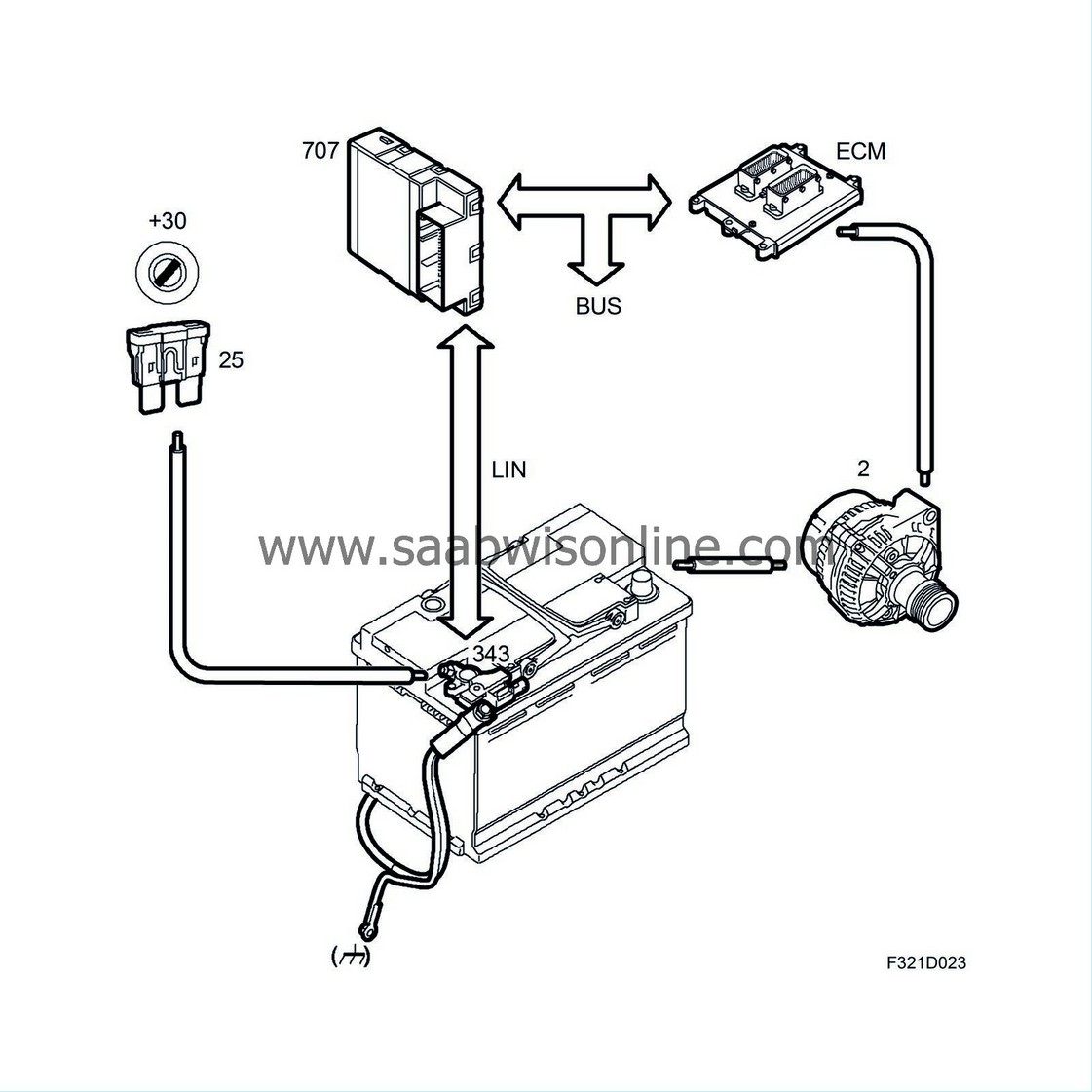Brief description
| Brief description |
| • |
Control module, E39 (ECM) (590)
|
|
| • |
Main instrument unit (MIU) (540)
|
|
| • |
Alternator (2)
|
|
| • |
Battery (1)
|
|
| • |
Column Integration Module, CIM (703a)
|
|
| Description |
Battery
The terminal voltage of the battery is 12V and its capacity is dependent on the engine variant. The battery delivers current to the starter motor for starting the engine and supplies other power consumers with current while the engine is not running. The positive battery terminal is connected to the starter motor and to the main fuse box in the engine bay and its negative terminal is connected to the body and the engine.The battery is located on the left-hand side of the engine bay. On some variance, it is contained in a battery cover to reduce heating. An air duct takes in air via the car's grille. The air from the air duct passes through the battery cover and consequently cools down the battery.

The battery electrolyte cannot be topped up. The battery electrolyte level is indicated by an indicator point on the top of the battery. If the indicator is dark, the level is OK. On low level the indicator is light and the battery should be changed.
Alternator
The task of the alternator is to supply power to all consumers when the engine has started, and to charge the battery. The alternator is an AC alternator with integral charge control.The alternator is driven by the engine using a poly V -belt from the crankshaft pulley. The Engine Control Module (ECM) determines when the alternator is to start charging, which occurs when the engine control module (ECM) receives a signal that the engine has started.
In the event of a charging failure the alternator sends about this information to control module, E39 (590). The control module sends the information, via the Column Integration Module, CIM (703a), on to the Main Instrument Unit, MIU (540) which indicates that charging is not working. A diagnostic trouble code DTC is generated in control module, E39.
Warning indicator for charging
The warning indicator for charging provides the driver with an indication that the alternator is charging or not. If the alternator is not charging a symbol appears in MIU's right-hand instrument (a battery symbol) and a warning message in the middle of MIU ("Battery not charging. Stop immediately"). When no warning message is displayed the alternator is charging.Information about the alternator's charge state is sent via the line to control module, E39. MIU receives information via a bus message from the control module, E39 whether the alternator is charging or not. A warning indicator is shown in MIU. When the ignition is on, and the engine is not running, you will not receive such a warning message.
Battery sensor
The battery sensor (343) together with the Body Control Module, BCM (707) has the task of optimising battery charging to reduce fuel consumption, high charging rate and long battery life.The optimal charging voltage can be calculated, by taking into account the current in the battery's negative connection, battery voltage and temperature, where this forms the basis of how the alternator's charging is to be controlled. The battery voltage is measured, partly when the battery has been at rest for several hours, and partly when it is in use.




